Homesteading and Self-Sufficiency
How Does Being Raised on a Homestead Shape a Child’s Educational Journey?
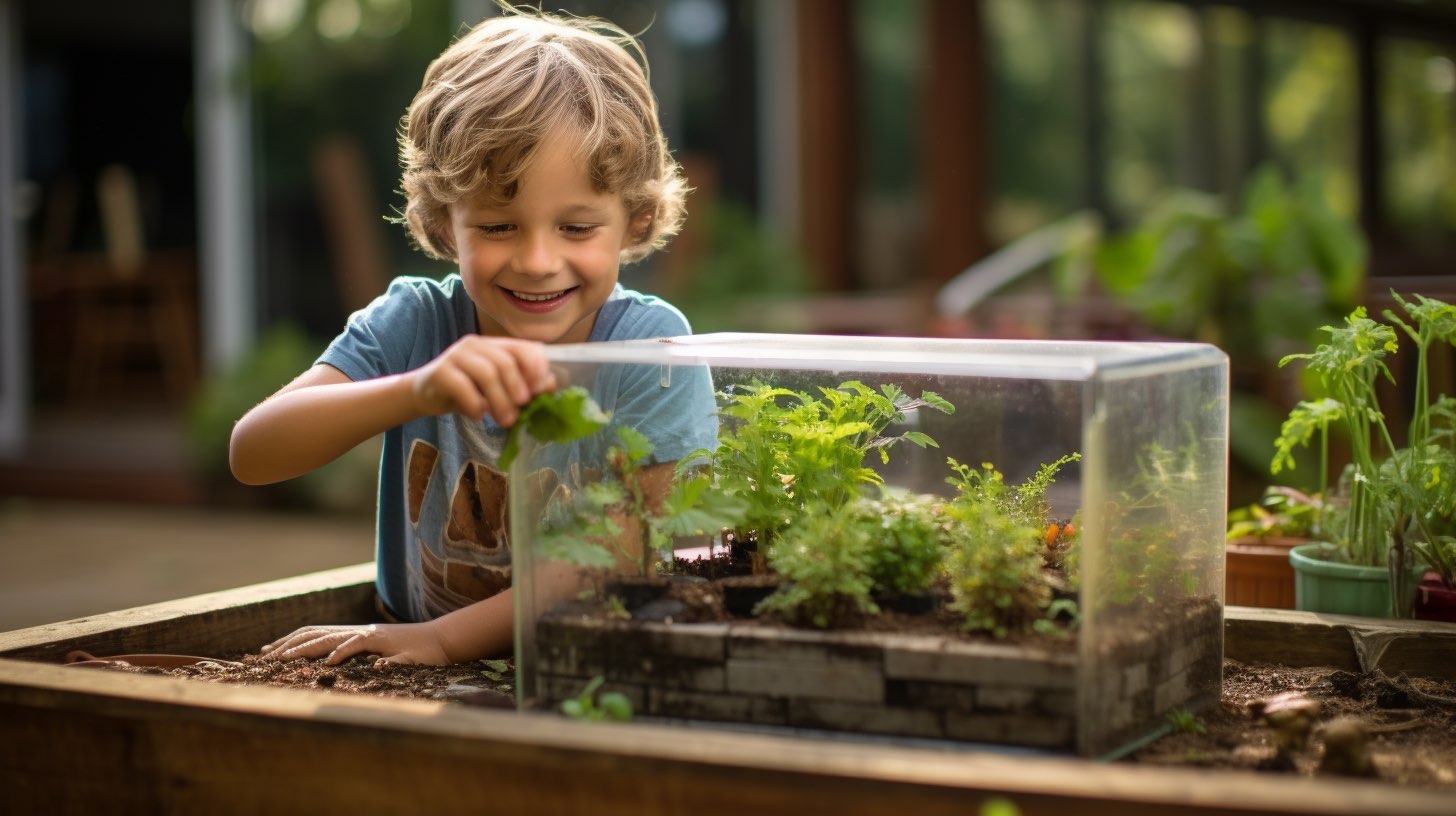
Growing up on a homestead is akin to an endless journey of learning. By experiencing the unique challenges and opportunities presented by such an environment, we understand how it shapes a child’s educational development.
From practical skills to a deep connection with nature, the homestead offers a wealth of learning opportunities. By assigning a range of chores and nurturing self-discipline, children develop important life skills and self-sufficiency.

Join us as we delve into the transformative effects of a homestead upbringing on a child’s educational journey.
Key Takeaways
- Homeschooling on a homestead promotes independence, self-sufficiency, and a personalized educational journey.
- Homestead education offers practical learning opportunities that develop hands-on skills, problem-solving abilities, and a deeper understanding of nature and sustainability.
- Practical tasks and real-life experiences on a homestead shape a child’s educational journey, broadening their understanding and fostering independence and self-reliance.
- Fostering a natural connection to nature on a homestead enhances engagement, cognitive function, environmental stewardship, and overall growth in a child’s educational journey.
The Role of Homeschooling in a Homestead Education
We believe homeschooling plays a significant role in fostering independence and self-sufficiency in a homestead education.
One of the key aspects of homeschooling in a homestead setting is the role of community support. Living on a homestead often means being part of a close-knit community where neighbors help each other out and share resources. This sense of community support extends to homeschooling as well.
Families on a homestead can rely on the expertise and guidance of other homeschooling families in the area, creating a network of support and collaboration.
Additionally, the integration of technology in homeschooling allows for a diverse range of educational resources and opportunities. With access to online classes, educational websites, and interactive learning tools, homeschooling on a homestead becomes a dynamic and engaging experience.
The combination of community support and technology integration enhances the quality of education in a homestead setting.
Imparting Practical Skills Education on a Homestead
Growing up on a homestead provides unique opportunities for practical skills education.
Through real-life learning experiences, children can develop hands-on skills that are applicable to their daily lives.

From learning to grow and harvest crops, to caring for animals, to building and repairing structures, homestead education offers practical education opportunities that foster independence and self-sufficiency.
Real-Life Learning Experiences
Experiencing hands-on activities and engaging in practical tasks on a homestead has broadened our understanding of real-life learning experiences. We believe that practical learning opportunities and experiential education are essential in shaping a child’s educational journey. By actively participating in daily tasks such as gardening, animal care, and maintenance work, children gain valuable skills and knowledge that cannot be acquired solely through textbooks and classroom lectures.
To illustrate the impact of real-life learning experiences, we have created a table showcasing the benefits of practical learning opportunities on a homestead:
| Benefits of Practical Learning Opportunities on a Homestead |
|---|
| 1. Develops practical skills and problem-solving abilities |
| 2. Fosters a deeper understanding of nature and sustainability |
| 3. Encourages independence and self-reliance |
Through these experiences, children learn to adapt to challenges, work collaboratively, and appreciate the value of hard work. They also develop a strong connection to the natural world and a sense of responsibility towards the environment. Overall, the homestead environment provides a unique and invaluable educational setting that prepares children for real-life situations and equips them with essential life skills.
Hands-On Skill Development
As we engage in hands-on skill development on our homestead, we’re able to impart practical skills education that prepares children for real-life situations. This kind of education goes beyond traditional classroom learning and provides children with valuable experiences that shape their educational journey.

Here are three ways in which practical gardening and animal care skills play a significant role:
- Practical gardening: By involving children in the process of growing their own food, they learn important skills such as planting, watering, and harvesting. They also gain an understanding of the importance of sustainable farming practices and the connection between nature and food production.
- Animal care skills: Caring for animals on the homestead teaches children responsibility, empathy, and the basics of animal welfare. They learn how to feed, groom, and provide a safe and nurturing environment for the animals. These skills not only benefit the animals but also instill a sense of compassion and respect for all living creatures.
- Holistic learning: Hands-on skill development on the homestead encourages a holistic approach to education. Children are able to connect theoretical knowledge with real-life experiences, fostering a deeper understanding and appreciation for the subjects they learn in school.
Practical Education Opportunities
We have found that three practical education opportunities on our homestead greatly enhance our children’s learning experiences. These hands-on learning experiences help our children develop practical life skills that will benefit them throughout their lives.
Practical Education Opportunities Benefits Gardening Teaches responsibility, patience, and problem-solving skills. Animal Husbandry Develops empathy, compassion, and teamwork. Woodworking Enhances fine motor skills, creativity, and problem-solving abilities.
Fostering a Natural Connection to Nature
Fostering a natural connection to nature is crucial in shaping a child’s educational journey.
Outdoor learning benefits, such as increased engagement and improved cognitive function, can be experienced when children are given the opportunity to interact with the natural world.
Additionally, fostering a connection to nature allows for the development of environmental stewardship, instilling a sense of responsibility and care for the environment.
Overall, integrating nature into education provides holistic experiences that nurture a child’s intellectual, emotional, and physical growth.
Outdoor Learning Benefits
Our research has shown that three key outdoor learning benefits include increased creativity, improved problem-solving skills, and enhanced physical health.
- Increased creativity: Outdoor exploration allows children to engage with their surroundings in a hands-on and imaginative way. They have the freedom to think outside the box, fostering their creativity and encouraging them to find unique solutions to challenges they may encounter in nature.
- Improved problem-solving skills: Nature-based curriculum provides children with opportunities to encounter real-world problems and find practical solutions. Whether it’s building a shelter or navigating through a trail, these experiences help develop critical thinking and problem-solving skills that can be applied to various aspects of their education and future endeavors.
- Enhanced physical health: Spending time outdoors promotes physical activity and reduces sedentary behavior. It allows children to engage in active play, develop their motor skills, and lead a healthier lifestyle overall.
Environmental Stewardship Development
Through participating in outdoor learning experiences, we can develop a natural connection to nature and foster environmental stewardship development in children. When children engage in practical conservation activities, such as gardening or recycling, they learn about the importance of sustainable living and become more conscious of their impact on the environment. This hands-on approach allows them to develop a sense of responsibility towards nature and instills a desire to protect and preserve it for future generations.
Practical Conservation Sustainable Living Planting trees Conserving water Recycling Reducing waste Composting Using renewable energy Building birdhouses Conserving energy Cleaning up litter Eating locally sourced food
Holistic Educational Experiences
By engaging in holistic educational experiences, we can develop a natural connection to nature and deepen our understanding of the world around us. Outdoor exploration plays a key role in this process, as it allows us to engage with our environment in a hands-on and immersive way.
Through activities such as hiking, camping, and gardening, we not only learn about the natural world but also develop critical thinking skills.

This includes observing patterns in nature, problem-solving in unfamiliar situations, and making connections between different elements of the ecosystem. By actively engaging with nature, we cultivate a sense of curiosity and wonder, which fuels our desire to learn more. This holistic approach to education fosters a deeper appreciation for the environment and empowers us to become active stewards of the natural world.
Transition: In addition to holistic educational experiences, assigning a broad range of chores for learning can further contribute to a well-rounded education.
Assigning a Broad Range of Chores for Learning
We can enhance our children’s learning experiences by assigning them a broad range of chores around the house. Assigning practical life skills as chores not only helps children develop essential skills but also contributes to their character development.
By involving children in household tasks such as cooking, cleaning, and organizing, they learn responsibility, time management, and problem-solving. These practical skills are essential for their future independence and success.
Additionally, chores teach children the value of hard work, perseverance, and teamwork as they contribute to the smooth functioning of the household. Furthermore, research suggests that children who regularly engage in chores develop a greater sense of empathy, self-discipline, and a strong work ethic.
Thus, assigning a broad range of chores can be a valuable educational tool for our children, fostering practical life skills and character development simultaneously.
Nurturing Self-Discipline in Homestead Education
Our children’s homestead education benefits greatly from consistently reinforcing self-discipline through daily routines and structured activities. Nurturing responsibility and building resilience are essential aspects of their development in this unique environment. Here are three ways in which we foster self-discipline in our children’s homestead education:
- Establishing a consistent schedule: By adhering to a regular routine, our children learn the importance of self-discipline and time management. This helps them develop a sense of responsibility towards their tasks and activities.
- Engaging in meaningful chores: Assigning age-appropriate chores not only teaches our children valuable life skills but also instills a sense of accountability. They learn to take ownership of their responsibilities and understand the impact of their actions on the homestead.
- Encouraging independent problem-solving: Homestead life often presents challenges and obstacles. By allowing our children to face these situations and find solutions on their own, we nurture their resilience and foster self-discipline in handling difficult situations.
Through these practices, we aim to equip our children with the necessary skills to navigate the complexities of life and become responsible, resilient individuals.
Encouraging Creativity in a Homestead Environment
In our homestead environment, we actively foster creativity through various outlets such as arts and crafts, gardening, and imaginative play. Encouraging artistic expression is an essential aspect of our educational approach.

By providing opportunities for children to engage in creative activities, we believe they’re able to develop their imagination and express themselves freely. Through arts and crafts, children can explore different mediums, experiment with colors, and create unique pieces that showcase their individuality.
Gardening also offers a creative outlet, as children learn to nurture plants and design their own outdoor spaces. Imaginative play allows children to explore different roles and scenarios, fostering critical thinking skills.
Instilling Resourcefulness in Homestead Education
When it comes to homestead education, instilling resourcefulness is key. By teaching practical problem-solving skills, children learn how to adapt and find solutions in various situations. This fosters self-sufficiency and independence, equipping them with valuable life skills that extend beyond the homestead.
Practical Problem-Solving Skills
We often rely on practical problem-solving skills to overcome challenges on the homestead. These problem-solving techniques and critical thinking strategies aren’t only essential for our daily tasks but also have a significant impact on our overall educational journey.
Here are three ways in which honing these skills on the homestead can shape a child’s educational experience:
- Adaptability: Living on a homestead requires us to think on our feet and find creative solutions to unexpected problems. This adaptability translates into a valuable skill in the classroom, where students face various academic challenges that demand flexibility and quick thinking.
- Resilience: The homestead lifestyle teaches us the importance of perseverance and resilience. When faced with setbacks or obstacles, we learn to keep trying until we find a solution. This resilience carries over into our educational journey, helping us navigate through difficult subjects or setbacks with determination and a positive mindset.
- Critical Thinking: On the homestead, critical thinking skills are essential for identifying and solving problems efficiently. Whether it’s troubleshooting a malfunctioning tool or devising a plan to optimize resources, these skills transfer to academic settings, where students are required to analyze information, evaluate different perspectives, and make informed decisions.
Self-Sufficiency and Independence
By fostering self-sufficiency and independence, we can equip children with the necessary skills to thrive in a homestead education. Teaching self-reliance is crucial in preparing children for a sustainable living on a homestead.
The homestead environment offers a unique opportunity for children to learn practical skills and develop a sense of responsibility. Through daily chores and responsibilities, children understand the importance of self-sufficiency and learn to take ownership of their actions. They become capable of growing their own food, tending to animals, and maintaining their living space.
This hands-on experience not only teaches them essential life skills but also instills a deep appreciation for nature and the environment.
Teaching Self-Sufficiency on a Homestead
As a family, we learn self-sufficiency on our homestead by working together to cultivate our own food. Living on a homestead provides us with the opportunity to teach our children important life skills that foster independence and resilience. Here are three ways in which teaching self-sufficiency on a homestead can benefit a child’s development:
- Responsibility: Growing our own food requires daily care and maintenance. By involving our children in these tasks, they learn the importance of taking responsibility for their actions and the impact it has on their environment.
- Problem-solving: Living on a homestead presents unique challenges, such as unpredictable weather or pest control. Our children are actively engaged in finding solutions to these problems, which helps develop their critical thinking and problem-solving skills.
- Self-reliance: By actively participating in the cultivation of our own food, our children learn to rely on themselves and their abilities. This sense of self-reliance instills confidence and independence, which are valuable traits for their educational journey and beyond.
Promoting Open-Ended Play in Homestead Education
On our homestead, we encourage our children to engage in open-ended play by providing them with a variety of materials and opportunities for imaginative exploration. Open-ended exploration and imaginative play are essential components of our children’s educational journey. By allowing them the freedom to explore and create without limitations, we foster their creativity, problem-solving skills, and emotional development.
Through open-ended play, our children learn to think outside the box, to adapt, and to find innovative solutions. They develop a deep sense of curiosity and are motivated to seek knowledge independently. This type of play also helps them develop a sense of agency and autonomy, as they learn to make choices and take responsibility for their own learning.
Moreover, open-ended exploration paves the way for the comprehension of life cycles in homestead learning, as children can witness firsthand the growth and transformation of plants and animals.
Comprehension of Life Cycles in Homestead Learning
We gain a deeper understanding of the life cycles in homestead learning through observing and actively participating in the growth and transformation of plants and animals. This hands-on approach allows us to witness firsthand the intricate processes and stages of life.
Here are three reasons why life cycle exploration is crucial in homestead education:
- Engages multiple senses: By actively participating in the life cycles, we engage our senses of touch, smell, and sight. This sensory experience enhances our understanding and makes the learning process more immersive.
- Promotes critical thinking: Observing and analyzing the life cycles of plants and animals encourages us to think critically and ask questions. We develop problem-solving skills as we explore the reasons behind certain changes and adaptions.
- Fosters a sense of responsibility: Taking part in the life cycles of homestead creatures teaches us about the importance of caring for and nurturing living beings. We learn about the interdependence and delicate balance of nature, fostering a sense of responsibility towards the environment and all its inhabitants.
Understanding life cycles through hands-on learning is just one aspect of homestead education. It opens up a multitude of related questions and discussions, such as how to integrate life cycle exploration into the curriculum or the benefits of incorporating technology in this process.
Related Questions and Discussions on Homestead Education
Our group’s exploration of homestead education has sparked a variety of engaging questions and discussions about its impact on children’s learning and development.
One of the main topics we’ve been discussing is the challenges of homestead education. Many members of our group have raised concerns about the potential isolation that children may experience on a homestead, as well as the lack of access to traditional educational resources.
On the other hand, we’ve also delved into the benefits of homestead education. We’ve discussed how being raised on a homestead can foster a deep connection with nature, promote self-sufficiency, and develop important life skills. Additionally, we’ve explored how homestead education can provide a unique learning environment that encourages creativity, problem-solving, and a strong work ethic.
Overall, our discussions have shed light on the complexities and potential of homestead education in shaping a child’s educational journey.
Frequently Asked Questions
How Does Being Raised on a Homestead Affect a Child’s Social Development?
Being raised on a homestead can greatly impact a child’s social development. Living in a close-knit community fosters strong interpersonal skills and a sense of belonging. These experiences shape the child’s ability to navigate social interactions and form lasting relationships.
What Are the Benefits of Homeschooling in a Homestead Education?
Benefits of homeschooling in a homestead education include personalized learning, practical skills development, and a strong connection to nature. Challenges may include limited social interaction and the need for parents to take on multiple roles as educators.
How Does a Homestead Education Impact a Child’s Academic Performance?
Being raised on a homestead shapes a child’s educational journey by fostering a strong work ethic, critical thinking skills, and a deep connection with nature. This holistic approach positively impacts their academic performance and cognitive development.
Do Children Raised on a Homestead Have Better Problem-Solving Skills?
Children raised on a homestead tend to develop strong problem-solving skills and critical thinking abilities. This can be attributed to the hands-on nature of their upbringing, which encourages them to think creatively and find solutions to practical challenges.
How Does Being Raised on a Homestead Shape a Child’s Future Career Choices?
Being raised on a homestead can shape a child’s future career choices by fostering a sense of independence and self-sufficiency. The skills gained through homesteading, such as problem-solving and resourcefulness, can lead to career exploration in fields like agriculture, sustainability, and entrepreneurship.
Conclusion
In conclusion, being raised on a homestead provides children with a unique educational journey that fosters practical skills, a deep connection to nature, self-discipline, and self-sufficiency.
Through homeschooling, a broad range of chores, and open-ended play, children on a homestead develop a comprehensive understanding of life cycles and gain invaluable life skills.
Their educational journey is like a tapestry woven with threads of hands-on learning, resilience, and a strong connection to the natural world, shaping them into well-rounded individuals ready to take on the challenges of life.
Homesteading and Self-Sufficiency
Discover Enchanting Farmhouse Living in America’s Heartlands

Experience the true essence of farmhouse living in the heart of America, where the rustic charm combines effortlessly with peaceful rural retreats. Immerse yourself in the enchanting world of farmhouse decor, hearty cuisine, and cozy accommodations that evoke a feeling of nostalgia. From the picturesque landscapes of Weaverville, NC to the breathtaking views of Pigeon Forge, there are countless opportunities to embrace the welcoming warmth and allure of farmhouse living.
Key Takeaways:
- Farmhouse living in America’s heartlands offers a charming escape to rustic decor, hearty meals, and tranquil countryside retreats.
- Weaverville, NC and Pigeon Forge are two destinations known for their enchanting farmhouse accommodations.
- Experience the rustic comforts of a farmhouse vacation home in Weaverville, NC, with amenities like hot tubs and fully equipped kitchens.
- Cozy up in charming cabins in Pigeon Forge’s heartland and enjoy amenities like stone fireplaces and outdoor hot tubs.
- Embrace the all-wood interiors and mountain views of American Heartland cabins in Pigeon Forge.
Experience the Rustic Comforts of a Farmhouse Vacation Home in Weaverville, NC.
When it comes to farmhouse living, Weaverville, NC offers a truly enchanting experience. Immerse yourself in the rustic comforts of a farmhouse vacation home, where charm meets modern amenities. Located in the heart of Weaverville, this farmhouse retreat is the perfect getaway for those looking to reconnect with nature and enjoy the tranquility of the countryside.
This spacious vacation home boasts 4 bedrooms, 3 bathrooms, and can comfortably accommodate up to 13 guests. With its alluring combination of farmhouse chic and contemporary design, this retreat blends the best of both worlds. The fully equipped kitchen allows guests to prepare delicious home-cooked meals, while the hot tub offers a relaxing escape from the daily grind.
Surrounded by breathtaking mountain views, this farmhouse vacation home provides the ultimate backdrop for your getaway. Spend your days exploring nearby attractions like the Reems Creek Golf Club, Vance Birthplace, and Grove Park Country Club. In the evenings, unwind on the deck or patio, taking in the serene beauty of the garden and relishing the fresh countryside air.

Key Features of the Weaverville Farmhouse Vacation Home:
- 4 bedrooms, 3 bathrooms
- Accommodates up to 13 guests
- Fully equipped kitchen
- Hot tub
- Deck or patio with garden views
- Nearby attractions: Reems Creek Golf Club, Vance Birthplace, Grove Park Country Club
Escape to the rustic comforts of this farmhouse vacation home in Weaverville, NC, and create unforgettable memories with your loved ones. Experience the beauty of farmhouse living while indulging in the modern luxuries that this retreat has to offer. Book your stay today and embark on a journey of tranquility, relaxation, and rejuvenation.
Cozy Up in a Charming Cabin in Pigeon Forge’s Heartland
Escape to the heartland of Pigeon Forge and experience the cozy charm of a charming cabin nestled in the picturesque surroundings. This delightful cabin is the perfect retreat for couples or small families, offering a romantic and intimate atmosphere.
The cabin features one spacious bedroom and one and a half bathrooms, providing ample space and privacy for your stay. The highlight of the cabin is its beautiful stone fireplace, creating a warm and inviting ambiance where you can relax and unwind after a day of exploring the charming town of Pigeon Forge.
Step outside onto the covered porch and breathe in the fresh mountain air while enjoying a cup of coffee or a glass of wine. The deck with a hot tub is the perfect spot to soak in the tranquil surroundings and rejuvenate your senses. Inside the cabin, you’ll find a fully equipped kitchen, a dining area, and a rec area with a foosball table for added entertainment.
“The cabin was absolutely charming, and the location was perfect for exploring Pigeon Forge. We loved cozying up by the fireplace and relaxing in the hot tub on the deck. It was the perfect getaway for a romantic weekend!” – Mary, recent guest
Charming Cabin in Pigeon Forge’s Heartland: Amenities
| Amenities | Details |
|---|---|
| Bedrooms | 1 bedroom |
| Bathrooms | 1 ½ bathrooms |
| Fireplace | Stone fireplace |
| Outdoor Spaces | Covered porch, deck with hot tub |
| Additional Amenities | Fully equipped kitchen, dining area, rec area with foosball table |
The charming cabin in Pigeon Forge’s heartland provides a cozy and intimate retreat, surrounded by the natural beauty of the Great Smoky Mountains. Whether you’re seeking a romantic getaway or a peaceful escape, this cabin offers the perfect ambiance for a memorable stay in the heart of Pigeon Forge.

Embrace the All-Wood Interior and Mountain Views in American Heartland Cabin
Immerse yourself in the cozy ambiance of the American Heartland cabin in Pigeon Forge. This charming retreat offers a rustic escape with its all-wood interior, creating a warm and inviting atmosphere. As you step inside, you’ll be greeted by the natural beauty of the wooden walls, floors, and ceilings, which exude a sense of comfort and tranquility.

With its picturesque mountain views, this cabin is the perfect getaway for nature lovers. Step out onto the covered deck and take in the breathtaking scenery as you relax in the rocking chairs and soak in the hot tub. Whether it’s the vibrant colors of autumn or the peaceful blanket of snow in winter, the ever-changing landscape will leave you mesmerized.
The cabin features 1 bedroom, a loft, and a queen sleeper sofa, accommodating up to 4 guests. You’ll find a stacked-stone fireplace that adds a touch of elegance and warmth to the living area. The fully equipped kitchen and dining area provide all the essentials for enjoying home-cooked meals with loved ones.
Create Memories in the Heart of the American Heartland Cabin
During your stay, make use of the picnic area-style charcoal grill for outdoor barbecues and gather around the foosball table for friendly competitions. Stay connected with wireless internet access or simply disconnect from the outside world and embrace the peacefulness of the cabin’s surroundings.
| Amenities | Details |
|---|---|
| All-Wood Interior | Creates a cozy and rustic atmosphere |
| Majestic Mountain Views | Enjoy the beauty of nature from the comfort of the cabin |
| Fully Equipped Kitchen | Prepare meals with ease and convenience |
| Covered Deck with Rocking Chairs | Relax and take in the stunning views |
| Hot Tub | Unwind and soak in the serenity |
| Wireless Internet | Stay connected or disconnect and unwind |
| Picnic Area-Style Charcoal Grill | Enjoy outdoor barbecues with loved ones |
| Foosball Table | Add a touch of fun to your stay |
The American Heartland cabin offers a memorable experience in the heart of Pigeon Forge’s natural beauty. Embrace the all-wood interior, indulge in the mountain views, and create cherished memories in this charming retreat.
Retreat to the Peaceful Countryside Surroundings of a Weaverville Farmhouse.
Experience the tranquility of farmhouse living in the peaceful countryside surroundings of a Weaverville farmhouse. This spacious vacation home offers a serene retreat with its 4 bedrooms, 3 bathrooms, and the ability to accommodate up to 13 guests. Whether you’re looking for a family getaway or a peaceful escape with friends, this farmhouse provides the perfect setting.
Step outside onto the deck or patio and breathe in the fresh country air while enjoying the picturesque views of the surrounding garden. The outdoor spaces offer a tranquil oasis where you can relax and unwind. Inside, you’ll find a fully equipped kitchen where you can prepare delicious meals using fresh, locally sourced ingredients.
The farmhouse is conveniently located near popular attractions such as the Reems Creek Golf Club, Vance Birthplace, and Grove Park Country Club. So, whether you’re an avid golfer or a history enthusiast, there’s something for everyone to enjoy. After a day of exploring, return to the peacefulness of the farmhouse and rejuvenate in the hot tub, soaking away any remaining stress.

Table: Weaverville Farmhouse Amenities
| Bedrooms | Bathrooms | Sleeps | Amenities |
|---|---|---|---|
| 4 | 3 | Up to 13 guests | Hot tub, fully equipped kitchen, washer and dryer, air conditioning |
Escape the hustle and bustle of everyday life and immerse yourself in the peaceful countryside surroundings of a Weaverville farmhouse. With its spacious accommodations, tranquil outdoor spaces, and convenient location, this farmhouse offers the perfect retreat for a relaxing and rejuvenating getaway.
Experience the Tranquility of Farmhouse Living in Rural Michigan
When it comes to farmhouse living, few places encapsulate the essence of peace and tranquility quite like rural Michigan. Natalie Ruth Joynton’s memoir, “Welcome to Replica Dodge,” beautifully captures the experience of embracing farmhouse living in this charming countryside. The memoir takes readers on a journey of self-discovery, exploring the complexities of faith, identity, and community in an unexpected setting.
“Farmhouse living in rural Michigan offers a unique sense of serenity and connection with nature. The tranquil surroundings and close-knit community create a space where one can truly find solace and peace,” Joynton writes.
In her memoir, Joynton vividly describes the beauty of her farmhouse, harmoniously blending rustic charm with modern comforts. The alluring simplicity of the wooden interiors and breathtaking views of the Michigan landscape create a sense of calm and serenity. The memoir delves into the power of farmhouse living to provide a sanctuary where one can escape the hustle and bustle of daily life.
To further emphasize the allure of farmhouse living in rural Michigan, Table 6 showcases the key characteristics that make this experience truly unique:
| Tranquility | Farmhouse Living | Rural Michigan |
|---|---|---|
| A serene escape from city life | A charming ambiance that evokes warmth and nostalgia | Idyllic countryside with rolling hills and picturesque views |
| Opportunity for self-reflection and rejuvenation | A connection to nature and the simple pleasures of life | Ample outdoor space for relaxation and recreation |
| Slow-paced living that encourages mindfulness | Authenticity and simplicity in everyday routines | Tight-knit communities that foster a strong sense of belonging |
Whether you’re seeking an escape from the chaos of the city or a chance to reconnect with nature, farmhouse living in rural Michigan offers a haven of tranquility. Discover the beauty of this serene lifestyle through Natalie Ruth Joynton’s captivating memoir, and immerse yourself in the peace and serenity that can only be found in the heart of rural America.

Discover the Beauty of Farmhouse Living in Rural Michigan
Experience the allure of tranquility and the rustic charm of farmhouse living in rural Michigan. From the simplicity of wooden interiors to the breathtaking views of the countryside, this memoir captures the essence of a peaceful sanctuary where one can find solace and connection with nature. Natalie Ruth Joynton’s captivating storytelling beautifully showcases the unique experience of farmhouse living in rural Michigan, emphasizing the tranquil surroundings, close-knit communities, and the power of farmhouse living to provide a harmonious balance between simplicity and modern comforts. Embrace the sense of peace and serenity that awaits in this idyllic setting, and discover the beauty that can only be found in the heart of rural America.
Discover the Unique Charm of Replica Dodge in Northern Michigan
Located in the heart of Northern Michigan, Replica Dodge is a farmhouse retreat that offers a truly unique and enchanting experience. Owned by Natalie Ruth Joynton, this charming farmhouse is surrounded by a life-size replica of Dodge City, Kansas, creating an atmosphere unlike any other.

As Joynton shares in her memoir, “Welcome to Replica Dodge,” the origins of this captivating replica and the motivations behind its creation are truly intriguing. The juxtaposition of Joynton’s Jewish heritage and rural living adds an additional layer of uniqueness and charm to the farmhouse and its surroundings.
“Replica Dodge is a testament to the endless possibilities of imagination and creativity. It’s a place where history and fiction intersect, creating a vibrant tapestry of culture and community,” reflects Joynton in her memoir.
Visitors to Replica Dodge can immerse themselves in the rich history and vibrant atmosphere of the replica town while enjoying the comforts of farmhouse living. From exploring the meticulously recreated streets of Dodge City to experiencing the warmth and hospitality of the farmhouse itself, every moment spent at Replica Dodge is sure to be memorable.
Table: Highlights of Replica Dodge
| Replica Dodge Highlights | Details |
|---|---|
| Unique Location | Surrounded by a life-size replica of Dodge City, Kansas |
| Charming Farmhouse | Comfortable accommodations in a rustic setting |
| Historical Experience | Explore the recreated streets of Dodge City |
| Immersive Atmosphere | Step into the vibrant culture and community of Replica Dodge |
Whether you’re seeking a one-of-a-kind getaway or a chance to step back in time, Replica Dodge in Northern Michigan offers a truly unique and charming experience. Discover the beauty of this farmhouse retreat and the captivating appeal of its surrounding replica town, and create memories that will last a lifetime.
Fall in Love with the Great Smoky Mountains in a Cozy Farmhouse Cabin
Experience the breathtaking beauty of the Great Smoky Mountains while enjoying the cozy comforts of a farmhouse cabin. Nestled in the heart of nature, these cabins offer an idyllic retreat for couples and small families. With their rustic charm and modern amenities, they provide the perfect blend of relaxation and adventure.
Imagine waking up to the gentle sounds of nature, surrounded by towering trees and majestic mountain views. Step outside onto the covered deck and take a dip in the bubbling hot tub, or simply sit back and soak in the peaceful ambiance. Inside, the cabin welcomes you with its warm and inviting atmosphere, featuring a charming stone fireplace and an all-wood interior that exudes rustic elegance.
“The Great Smoky Mountains offer a truly magical setting for a cozy farmhouse retreat. The combination of natural beauty and charming accommodations creates a truly unforgettable experience.” – Traveler’s Magazine
Whether you’re planning a romantic getaway or a family vacation, there’s something for everyone in the Great Smoky Mountains. Explore the nearby hiking trails and immerse yourself in the stunning scenery, or venture into downtown Pigeon Forge to discover an array of shops, restaurants, and attractions.
| Key Features: | Details: |
|---|---|
| Bedrooms: | 1 |
| Bathrooms: | 1 ½ |
| Amenities: | Stone fireplace, all-wood interior, flatscreen TV, hot tub |
| Location: | Great Smoky Mountains, near downtown Pigeon Forge |

Escape the hustle and bustle of everyday life and fall in love with the tranquility of the Great Smoky Mountains. Book your cozy farmhouse cabin today and create unforgettable memories in this enchanting destination.
Experience the Warmth of Farmhouse Living in Pigeon Forge
Farmhouse living in Pigeon Forge provides a warm and welcoming experience for visitors. With charming cabin rentals featuring all-wood interiors, stone fireplaces, and modern amenities, guests can enjoy the cozy comforts of a farmhouse while being close to the attractions and entertainment of Pigeon Forge. The combination of rustic decor, picturesque surroundings, and convenient location creates a memorable farmhouse experience in the heart of Pigeon Forge.
When you step into a farmhouse cabin in Pigeon Forge, you are greeted with the unmistakable warmth of a rustic retreat. The all-wood interiors exude a charming and cozy atmosphere, enveloping you in a sense of tranquility. The stone fireplaces provide the perfect spot to curl up with a book or enjoy a glass of wine, creating a cozy ambiance that is hard to find elsewhere.
In addition to the inviting interiors, Pigeon Forge offers a wealth of attractions and entertainment options. From exploring the natural beauty of the Great Smoky Mountains to indulging in delicious Southern cuisine, there is something for everyone to enjoy. Whether you prefer outdoor adventures like hiking and fishing or prefer to spend your days shopping and dining in charming downtown Pigeon Forge, the possibilities are endless.

So why not immerse yourself in the warmth of farmhouse living in Pigeon Forge? Whether you’re planning a romantic getaway or a family vacation, the charm and comfort of a farmhouse cabin will surely create cherished memories. Experience the tranquility, the beauty, and the hospitality that Pigeon Forge has to offer and discover why farmhouse living is truly special in this vibrant and inviting destination.
Immerse in the Peaceful Ambience of a Weaverville Farmhouse Retreat
Escape to the tranquil countryside surroundings of Weaverville, NC and immerse yourself in the peaceful ambience of a farmhouse retreat. Nestled amidst the beauty of nature, these spacious vacation homes offer a serene and rejuvenating getaway. Whether you’re seeking a romantic escape or a family vacation, a Weaverville farmhouse retreat provides the perfect setting for relaxation and rejuvenation.
Indulge in the simplicity and charm of farmhouse living, where you can unwind and reconnect with nature. The peaceful ambience envelops you as soon as you step foot into these beautifully designed retreats. Enjoy the comforts of a fully equipped kitchen, where you can prepare delicious meals using fresh locally sourced ingredients. Spend your evenings soaking in a luxurious hot tub, gazing at the starry sky and letting go of all your worries.
Wake up to the sounds of birds chirping and breathe in the fresh country air. Step out onto the deck or patio and savor your morning coffee while overlooking the picturesque surroundings. Explore the nearby hiking trails, go fishing in the nearby streams, or simply relax in the garden and soak up the peaceful atmosphere. A Weaverville farmhouse retreat offers countless opportunities to reconnect with nature and find inner peace.
Whether you’re seeking solitude or quality time with loved ones, a Weaverville farmhouse retreat provides the perfect escape. Immerse yourself in the peaceful ambience and let the tranquility of the countryside wash over you. Create lasting memories in a place where time stands still and serenity abounds.

Table: Amenities at a Weaverville Farmhouse Retreat
| Bedrooms | Bathrooms | Sleeps | Outdoor Spaces | Amenities |
|---|---|---|---|---|
| 4 | 3 | Up to 13 guests | Deck or patio, garden | Fully equipped kitchen, hot tub, washer and dryer, air conditioning |
Explore the Rustic Beauty of Farmhouse Living in Pigeon Forge
Farmhouse living in Pigeon Forge offers a captivating blend of rustic beauty and modern comforts. Nestled amidst the scenic surroundings, charming cabins provide an inviting atmosphere for visitors to immerse themselves in the quintessential farmhouse experience. Whether it’s the cozy warmth of a stone fireplace or the relaxation of a private hot tub, Pigeon Forge offers a unique and memorable vacation experience for those seeking the allure of farmhouse living.
Experience the Charm of Rustic Cabin Interiors
The rustic beauty of Pigeon Forge’s farmhouse cabins is showcased in their all-wood interiors, creating a cozy and welcoming ambiance. The rich textures and natural tones of the woodwork exude a sense of warmth and comfort, enveloping guests in an authentic farmhouse atmosphere. From the stacked-stone fireplaces to the carefully crafted furnishings, every detail is thoughtfully designed to accentuate the rugged charm of the cabins.
Discover Tranquility in Scenic Surroundings
Pigeon Forge’s farmhouse cabins are strategically nestled in the scenic beauty of the area, allowing guests to bask in the tranquility of their surroundings. From sweeping mountain views to lush greenery, the picturesque landscapes provide a serene backdrop for relaxation and rejuvenation. Whether it’s sipping coffee on the porch, enjoying a peaceful hike in the nearby trails, or simply unwinding in the natural beauty, farmhouse living in Pigeon Forge offers an escape from the hustle and bustle of everyday life.
Modern Amenities for a Comfortable Stay
While farmhouse living embraces the rustic charm of the past, Pigeon Forge’s cabins also offer modern amenities for a comfortable stay. Fully equipped kitchens allow guests to prepare meals with ease, while spacious living areas provide ample room for relaxation and entertainment. Whether it’s curling up with a book by the fireplace or gathering around the dining table for a family meal, these cabins ensure that every aspect of farmhouse living is complemented by modern conveniences.
So, next time you visit Pigeon Forge, step into the rustic beauty of farmhouse living and create cherished memories in the heartland of America.
Conclusion
Farmhouse living in America’s heartlands offers an enchanting escape to rustic charm, cozy comforts, and peaceful surroundings. Whether you choose to stay in a charming cabin in Pigeon Forge, immerse in the tranquility of a farmhouse in Weaverville, NC, or explore the unique charm of Replica Dodge in rural Michigan, farmhouse living provides a variety of experiences that will create cherished memories.
From the all-wood interiors and mountain views of the American Heartland cabin to the warm and inviting farmhouse retreats in Weaverville, NC, and Pigeon Forge, there is something for everyone to enjoy. The Great Smoky Mountains, picturesque countryside, and convenient access to popular attractions make these destinations perfect for a romantic getaway or a family vacation.
Whether you’re cozying up by the fireplace, relaxing in the hot tub, or exploring the natural beauty of the surroundings, farmhouse living in America’s heartlands offers a unique and memorable vacation experience. So, pack your bags and immerse yourself in the enchantment of farmhouse living in the heartlands of America.
FAQ
What amenities are included in the farmhouse vacation home in Weaverville, NC?
The farmhouse vacation home in Weaverville, NC is equipped with amenities such as a hot tub, fully equipped kitchen, washer and dryer, and air conditioning.
What popular attractions are near the farmhouse vacation home in Weaverville, NC?
The farmhouse vacation home in Weaverville, NC is conveniently located near popular attractions like Reems Creek Golf Club, Vance Birthplace, and Grove Park Country Club.
What amenities are included in the charming cabin in Pigeon Forge’s heartland?
The charming cabin in Pigeon Forge’s heartland offers amenities like a fully equipped kitchen, dining area, rec area with a foosball table, and outdoor spaces including a covered porch and deck with a hot tub.
How far is the charming cabin in Pigeon Forge’s heartland from downtown Pigeon Forge?
The charming cabin in Pigeon Forge’s heartland is located just 8 miles from downtown Pigeon Forge, providing easy access to restaurants, shops, and attractions.
What amenities are included in the American Heartland cabin in Pigeon Forge?
The American Heartland cabin in Pigeon Forge features amenities like a stacked-stone fireplace, fully equipped kitchen, dining area, and outdoor spaces including a covered deck with rocking chairs and a hot tub.
What conveniences are offered in the American Heartland cabin in Pigeon Forge?
The American Heartland cabin in Pigeon Forge offers conveniences like wireless internet, a picnic area-style charcoal grill, and a foosball table for entertainment.
What amenities are included in the farmhouse in Weaverville, NC?
The farmhouse in Weaverville, NC offers amenities like a hot tub, fully equipped kitchen, washer and dryer, air conditioning, and outdoor spaces including a deck or patio and garden.
What popular attractions are near the farmhouse in Weaverville, NC?
The farmhouse in Weaverville, NC is conveniently located near popular attractions like Reems Creek Golf Club, Vance Birthplace, and Grove Park Country Club.
What is Natalie Ruth Joynton’s memoir about?
Natalie Ruth Joynton’s memoir, “Welcome to Replica Dodge,” explores her experience of embracing farmhouse living in rural Michigan, and delves into the journey of finding one’s place in a new environment and the complexities of faith, identity, and community in an unexpected setting.
What is the setting of Natalie Ruth Joynton’s memoir, “Welcome to Replica Dodge”?
Natalie Ruth Joynton’s memoir, “Welcome to Replica Dodge,” revolves around her ownership of a farmhouse in Northern Michigan, surrounded by a life-size replica of Dodge City, Kansas. The memoir explores the origins of Replica Dodge and the intriguing motivations behind its creation.
What amenities are included in the cozy farmhouse cabin in the Great Smoky Mountains?
The cozy farmhouse cabin in the Great Smoky Mountains offers amenities like a stone fireplace, all-wood interior, flatscreen TV, and a hot tub on the covered deck.
How far is the cozy farmhouse cabin in the Great Smoky Mountains from downtown Pigeon Forge?
The cozy farmhouse cabin in the Great Smoky Mountains is just a short drive away from downtown Pigeon Forge, where guests can explore restaurants, shops, and attractions.
What can guests expect from farmhouse living in Pigeon Forge?
Farmhouse living in Pigeon Forge provides a warm and welcoming experience with charming cabin rentals featuring all-wood interiors, stone fireplaces, and modern amenities. Guests can enjoy the cozy comforts of a farmhouse while being close to the attractions and entertainment of Pigeon Forge.
What amenities can guests find in a Weaverville farmhouse retreat?
Guests can unwind in spacious vacation homes with amenities like hot tubs, fully equipped kitchens, and outdoor spaces. The serene countryside setting provides a tranquil escape from the hustle and bustle of everyday life, allowing guests to immerse in the peaceful ambience of farmhouse living in Weaverville.
What can guests experience in farmhouse living in Pigeon Forge?
Farmhouse living in Pigeon Forge showcases the rustic beauty of the area, with charming cabins nestled in scenic surroundings. Guests can experience the warm and inviting atmosphere of a farmhouse while enjoying modern amenities and easy access to the attractions and natural beauty of Pigeon Forge.
What can guests expect in farmhouse living in America’s heartlands?
Farmhouse living in America’s heartlands provides an enchanting escape to rustic charm, cozy comforts, and peaceful surroundings. From the scenic beauty of the Great Smoky Mountains to the serene countryside of Weaverville, NC, and the unique charm of Replica Dodge in rural Michigan, farmhouse living offers a variety of experiences for a memorable vacation.
Homesteading and Self-Sufficiency
Master the Countryside Charm: 10 Tips to Add Rustic Accents in Your Kitchen

Prepare to turn your kitchen into a cozy, rustic retreat using our top 10 professional guidelines.
We’ve gathered the best advice to help you master the countryside charm and infuse your space with rustic accents.
From embracing weathered wood to incorporating vintage touches, we’ll show you how to create a kitchen that exudes warmth and character.
So roll up your sleeves and let’s bring the beauty of the countryside right into your home.
Key Takeaways
- Incorporating salvaged wood and natural materials adds a unique and rustic look to the kitchen.
- Weathered wood and distressed finishes create a warm and inviting atmosphere.
- Antique furniture and vintage touches bring nostalgia and character to the space.
- Sustainable and eco-friendly options, such as stone countertops and reclaimed items, contribute to a more environmentally friendly kitchen design.
Choose Natural Materials
We should prioritize using natural materials in our kitchen design to enhance the rustic charm. One way to achieve this is by incorporating salvaged wood into our kitchen cabinets and countertops.
Salvaged wood not only adds a unique and rustic look to our kitchen, but it also helps reduce waste and promote sustainability. The imperfections and weathered texture of salvaged wood give our kitchen a warm and inviting feel.

Additionally, using organic textiles for our kitchen linens and upholstery can further enhance the natural aesthetic. Organic textiles are made from natural fibers that are free from harmful chemicals, making them not only environmentally friendly but also safer for us and our family.
Embrace Weathered Wood
When it comes to adding rustic charm to our kitchen, we can’t help but embrace the beauty of weathered wood. The allure of antique furniture and decor brings a sense of history and character to the space, while distressed wood finishes add a touch of elegance.
Antique Furniture and Decor
Our kitchen is adorned with several beautiful antique furniture pieces and weathered wood decor. The rustic charm of these items brings a touch of nostalgia and warmth to our space.
One of our favorite aspects of antique furniture is the intricate craftsmanship that goes into each piece. We love the unique details and the sense of history they bring to our kitchen.
In addition to the furniture, we also have a collection of vintage kitchen appliances that add to the overall charm. These appliances not only serve their purpose but also act as decorative accents. From the antique stove to the retro refrigerator, each appliance adds a touch of nostalgia to our kitchen.
As we explore the topic of antique furniture and decor, it’s natural to transition into discussing distressed wood finishes.

Distressed Wood Finishes
Embrace the rustic charm of distressed wood finishes and add warmth to your space with weathered wood accents.
Distressed wood furniture and rustic cabinetry can instantly transform your kitchen into a cozy, countryside retreat. Imagine walking into a kitchen with a worn, weathered farmhouse table that exudes character and history. The rough texture and faded paint create a sense of nostalgia, reminding us of simpler times.
For a more subtle touch, opt for rustic cabinetry with distressed wood finishes. The knots, cracks, and imperfections in the wood add a unique and authentic touch to your kitchen.
The beauty of distressed wood lies in its ability to blend seamlessly with various design styles, from farmhouse to industrial. So, whether you’re going for a vintage-inspired kitchen or a modern rustic look, incorporating distressed wood accents is the perfect way to infuse your space with warmth and charm.
Incorporating Natural Textures
Let’s consider incorporating natural textures in our kitchen design, such as using a set of 10 weathered wood countertops to add rustic charm. Natural materials like weathered wood can instantly transform your kitchen into a cozy and inviting space.
Here are four reasons why incorporating natural textures is a great idea:

-
Timeless Appeal: Weathered wood brings a sense of history and character to your kitchen, creating a warm and welcoming atmosphere.
-
Visual Interest: The unique textures and grain patterns of weathered wood add depth and visual interest to your countertops, making them a focal point in the room.
-
Versatility: Weathered wood countertops can be paired with various design styles, from farmhouse to modern, allowing you to create a personalized look that suits your taste.
-
Sustainability: By choosing natural materials like weathered wood, you’re making an eco-friendly choice that promotes sustainability and reduces environmental impact.
Considering the beauty and benefits of incorporating natural textures, let’s now explore another option for adding elegance to our kitchens: opting for stone countertops.
Opt for Stone Countertops
We should consider installing stone countertops for a timeless and durable addition to our kitchen. Stone countertops have numerous benefits that make them a popular choice among homeowners. Not only do they add a touch of elegance and sophistication to any kitchen, but they are also incredibly durable and resistant to scratches, stains, and heat. Additionally, stone countertops are easy to clean and maintain, making them a practical choice for busy kitchens.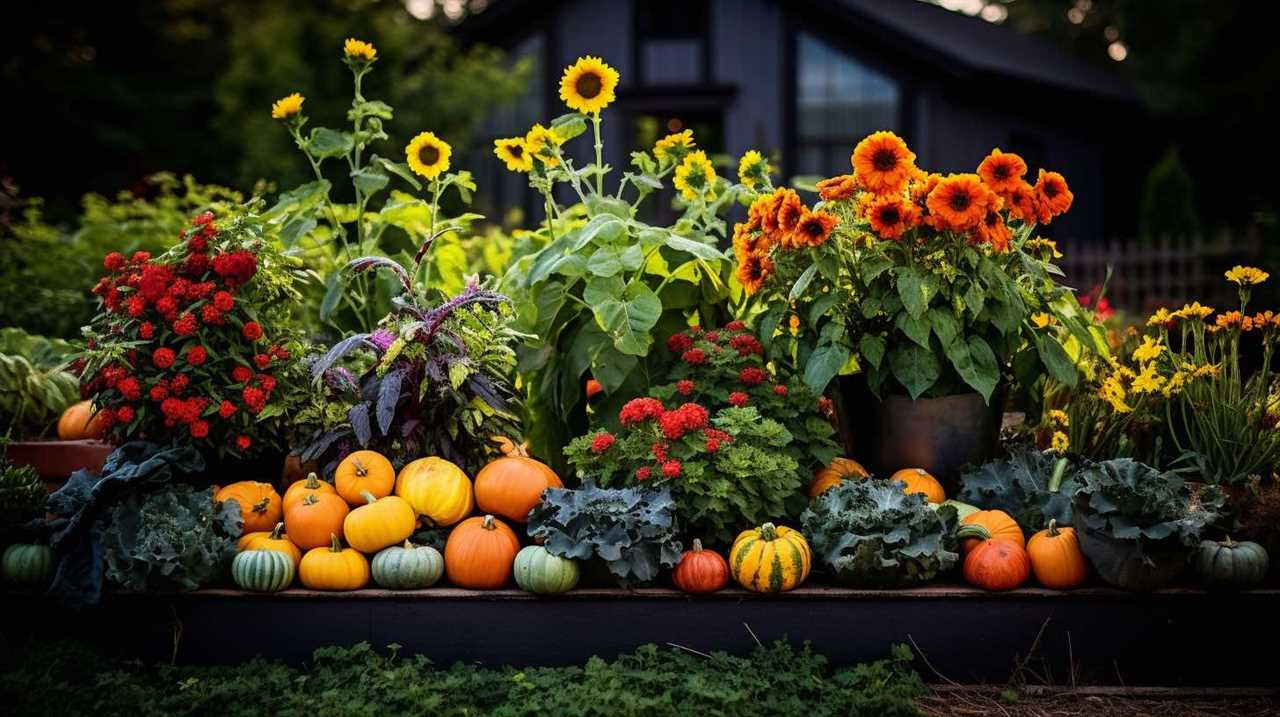
When it comes to stone countertops, there are several different types to choose from. Each type has its own unique characteristics and features that can enhance the overall aesthetic of our kitchen. Let’s take a look at a comparison table of the most popular stone countertop options:
| Stone Type | Appearance | Durability |
|---|---|---|
| Granite | Natural, speckled pattern | Extremely durable, resistant to heat and scratches |
| Marble | Elegant, veined pattern | Softer than granite, prone to staining and scratching |
| Quartz | Wide range of colors and patterns | Highly durable, non-porous, resistant to stains |
Incorporate Vintage Touches
Let’s bring a touch of nostalgia into our kitchen with vintage accents that add character and charm.
Antique kitchenware essentials, like a set of vintage mixing bowls or a retro toaster, can instantly transport us back in time while serving a practical purpose.
To create a rustic farmhouse-inspired atmosphere, we can also incorporate rustic farm-inspired decor, such as a reclaimed wood shelf or a vintage sign that adds a rustic touch to our culinary space.
Antique Kitchenware Essentials
We love using antique kitchenware essentials to add a vintage touch to our rustic farmhouse kitchen. There’s something special about incorporating pieces from the past into our daily lives. Antique kitchenware not only adds a unique charm to our kitchen but also serves as a conversation starter when guests visit.
Here are four reasons why antique kitchenware collecting is worth considering:
-
Timeless Beauty: Vintage kitchen appliances, such as cast iron pans or copper pots, exude a timeless beauty that modern counterparts simply can’t replicate.
-
Superior Craftsmanship: Antique kitchenware was made with exceptional attention to detail and quality materials, ensuring durability that withstands the test of time.
-
Nostalgic Appeal: Owning and using antique kitchenware allows us to connect with the past, evoking a sense of nostalgia and warmth.
-
Sustainable Choice: By repurposing and reusing antique kitchenware, we contribute to a more sustainable lifestyle, reducing waste and our carbon footprint.
Rustic Farmhouse-Inspired Decor
The rustic farmhouse-inspired decor in our kitchen creates a cozy and charming atmosphere with its vintage touches. The earthy tones of the wooden cabinets and exposed beams give a warm and inviting feel. The distressed finishes on the furniture and the reclaimed wood used for the countertops add a touch of authenticity and rustic charm.
The soft lighting from the vintage-inspired pendant lights creates a warm glow, perfect for intimate gatherings. To further enhance the eco-friendly aspect of our kitchen, we’ve incorporated sustainable materials such as bamboo flooring and recycled glass tiles. The use of natural materials not only adds to the rustic charm but also reduces our carbon footprint.
With its combination of vintage elements and eco-friendly choices, our rustic farmhouse-inspired kitchen decor truly brings nature and warmth into our home.
Add Rustic Lighting Fixtures
We absolutely love the idea of adding rustic lighting fixtures to our kitchen to enhance its countryside charm. Rustic pendant lights are the perfect addition to create a warm and inviting atmosphere in our farmhouse-inspired space. Here are four reasons why we believe rustic lighting is a must-have in any farmhouse kitchen:
-
Authenticity: Rustic pendant lights add an authentic touch to our kitchen, evoking the charm of a cozy countryside cottage.
-
Warmth: The soft glow emitted by these fixtures instantly creates a warm and inviting ambiance, perfect for gathering with family and friends.
-
Versatility: Rustic lighting fixtures come in various styles and designs, allowing us to choose one that complements our existing decor and personal taste.
-
Statement Piece: A rustic pendant light can serve as a stunning focal point, adding visual interest and character to our kitchen.

With the addition of rustic pendant lights, our farmhouse kitchen will become a true haven of countryside charm.
Install Open Shelving
Let’s start by measuring and marking the wall where we want to install open shelving.
Open shelving has become increasingly popular in kitchens due to its numerous benefits. Not only does it create a sense of openness and spaciousness, but it also allows for easy access to frequently used items.
To maximize the functionality and visual appeal of your open shelves, consider styling them with a mix of practical and decorative items. Arrange your dishes, glassware, and cookbooks in an organized and aesthetically pleasing manner. Add some greenery with potted herbs or small plants to bring a touch of freshness to the space.
To transition into the subsequent section about using salvaged or reclaimed items, consider incorporating salvaged wood as the material for your open shelves, giving them a rustic and charming feel.
Use Salvaged or Reclaimed Items
When it comes to adding rustic charm to our kitchen, one of the best ways we’ve found is by using salvaged or reclaimed items.

Not only is it an eco-friendly choice, but it also adds a unique vintage design element to our space.
Plus, it’s a budget-friendly way to incorporate rustic accents without breaking the bank.
Eco-Friendly Kitchen Decor
We can incorporate up to 10 salvaged or reclaimed items to achieve an eco-friendly kitchen decor. By embracing sustainable kitchen practices, we can create a space that not only looks beautiful but also minimizes our impact on the environment.
Here are four ways to achieve an eco-friendly kitchen decor:
-
Use salvaged or reclaimed wood for countertops or kitchen cabinets. This not only adds a rustic charm but also reduces the need for new materials.
-
Opt for eco-friendly kitchen appliances that are energy-efficient and made from recyclable materials. These appliances not only save energy but also reduce waste.

-
Install a water filtration system to reduce the use of plastic water bottles and ensure clean drinking water.
-
Incorporate plants and herbs into your kitchen decor. They not only add a touch of greenery but also improve indoor air quality.
Unique Vintage Design
We can enhance our kitchen with a unique vintage design by incorporating salvaged or reclaimed items. Adding vintage inspired accessories and rustic wall decor can bring a charming and nostalgic feel to our kitchen space.
Picture this: a worn wooden table with mismatched chairs, a wall adorned with weathered signs and vintage advertisements, and shelves filled with antique kitchenware. To achieve this look, we can explore flea markets, thrift stores, and online marketplaces for one-of-a-kind treasures. Consider incorporating salvaged items like old doors or windows to create a unique focal point.
By mixing and matching different textures and materials, we can create a warm and inviting atmosphere that harkens back to simpler times.
Now, let’s move on to discussing budget-friendly rustic accents to complete our kitchen’s transformation.
Budget-Friendly Rustic Accents
Let’s explore how to add budget-friendly rustic accents to our kitchen by using salvaged or reclaimed items. Creating a warm and inviting atmosphere doesn’t have to break the bank. With a little creativity and some DIY skills, we can transform our kitchen into a charming rustic haven. Here are four simple steps to achieve that rustic look:
-
Salvaged Wood: Incorporate salvaged wood into your kitchen design. Use it to create a unique backsplash or open shelves for a touch of rustic charm.
-
Vintage Inspired Accessories: Look for vintage inspired accessories such as old mason jars, enamelware, or antique kitchen utensils. These items add character and nostalgia to your kitchen.
-
Reclaimed Furniture: Give new life to old furniture by repurposing or refinishing it. An old farmhouse table or a vintage cabinet can become the centerpiece of your rustic kitchen.
-
DIY Projects: Get creative and try your hand at some rustic DIY projects. Build a wooden spice rack or make your own distressed wood signs. These personalized touches will add a handmade charm to your kitchen.
Bring in Natural Textures
As we explore rustic accents in our kitchen, we can bring in natural textures with the use of wooden countertops and woven placemats. Incorporating natural elements into our kitchen design not only adds warmth and charm but also creates a cozy and inviting atmosphere.
The wooden countertops exude a sense of rustic elegance with their rich grains and earthy tones, providing a natural focal point in the space. Paired with woven placemats, which feature intricate patterns and tactile textures, we can achieve a harmonious blend of rustic and natural elements. These placemats not only protect our countertops but also add depth and visual interest to our kitchen.
By incorporating these rustic accessories, we can create a kitchen that embraces the beauty of nature and exudes a timeless countryside charm.
Now, let’s explore another way to enhance our rustic kitchen design by integrating a farmhouse sink.
Integrate Farmhouse Sink
The farmhouse sink adds a touch of rustic elegance to our kitchen design. It not only serves as a functional element but also becomes a statement piece that enhances the overall aesthetic. Here are four reasons why integrating a farmhouse sink is a great idea:
-
Charming and Timeless: The farmhouse sink exudes a sense of charm and nostalgia, bringing a rustic touch to our modern kitchen.
-
Versatile and Spacious: With its deep and wide basin, the farmhouse sink accommodates large pots and pans, making it perfect for a busy kitchen.
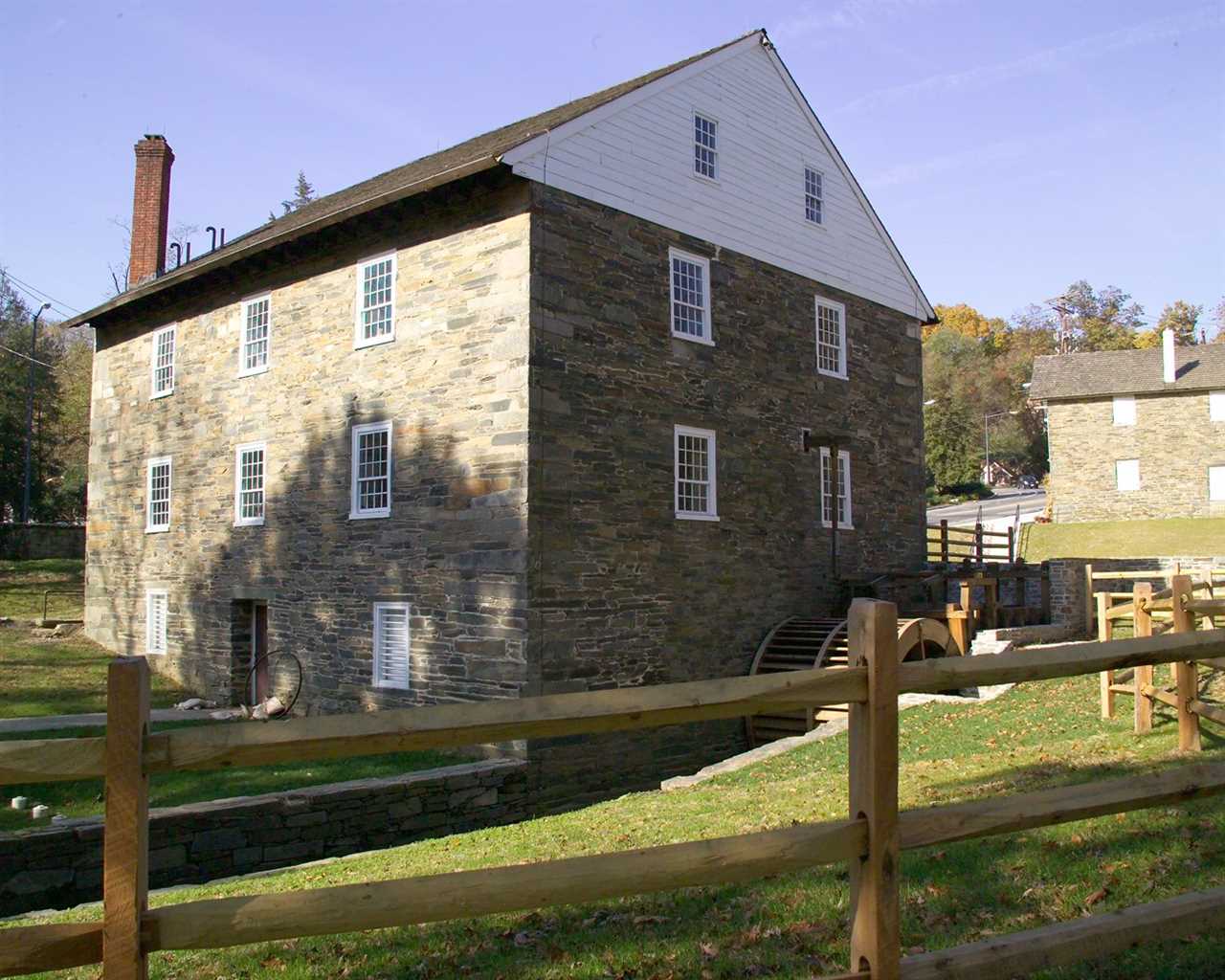
-
Easy to Clean: The apron front design eliminates the countertop edge, making it easy to clean and maintain.
-
Pairs Well with Rustic Kitchen Backsplash: The farmhouse sink beautifully complements a rustic kitchen backsplash, creating a cohesive and visually appealing design.
By integrating a farmhouse sink, we can achieve a cohesive and timeless look for our kitchen.
Now let’s explore how we can include rustic accents in the color palette to further enhance the charm.
Include Rustic Accents in the Color Palette
We can experiment with at least five different shades of warm earth tones to include rustic accents in our kitchen’s color palette. By incorporating rustic color schemes, such as deep browns, warm oranges, and muted greens, we can create a cozy and inviting atmosphere. These earthy tones evoke the beauty of nature and add a touch of rustic charm to our kitchen. To visualize the impact of these colors, let’s take a look at the table below:
| Color | Description | Mood |
|---|---|---|
| Deep Brown | Rich and comforting | Cozy |
| Warm Orange | Energetic and vibrant | Invigorating |
| Muted Green | Calm and soothing | Serene |
| Earthy Red | Rustic and earthy | Warm |
| Golden Yellow | Bright and cheerful | Sunny |
Frequently Asked Questions
How Do I Properly Care for and Maintain Stone Countertops in a Rustic Kitchen?
When it comes to stone countertop maintenance in a rustic kitchen, proper care is essential. To keep your countertops looking their best, we recommend using a gentle cleanser specifically designed for stone surfaces. Avoid harsh chemicals or abrasive scrubbers that can cause damage.

Regularly wipe down your countertops with a soft cloth and warm, soapy water to remove any spills or stains. Don’t forget to seal your stone countertops periodically to protect against stains and water damage.
Are There Any Specific Design Considerations When Incorporating Vintage Touches Into a Rustic Kitchen?
When it comes to incorporating vintage touches into a rustic kitchen, there are indeed specific design considerations to keep in mind. Vintage touches can add a charming and nostalgic feel to the space, but it’s important to ensure that they seamlessly blend with the overall aesthetic.
From selecting the right vintage pieces to considering their placement and functionality, attention to detail is key.
What Are Some Creative Ways to Incorporate Natural Textures in a Rustic Kitchen Design?
Incorporating natural textures in a rustic kitchen design can be achieved in creative ways.
Utilizing reclaimed wood is a great way to add warmth and authenticity to the space. Whether it’s a reclaimed wood countertop, a kitchen island made from old barn wood, or floating shelves crafted from salvaged timber, the natural grain and aged patina of reclaimed wood will bring a rustic charm to your kitchen.
Additionally, incorporating stone accents, such as a stone backsplash or a stone fireplace, can further enhance the natural and rustic feel of the space.

Can You Provide Some Tips on How to Install Open Shelving in a Rustic Kitchen?
Sure, we can provide you with some tips on installing open shelving in a rustic kitchen.
One important thing to consider is the weight of the items you’ll be placing on the shelves. Make sure to use sturdy brackets and anchors to support the weight.
Additionally, choose reclaimed wood or natural materials for the shelves to maintain the rustic look.
To care for stone countertops in a rustic kitchen, regularly clean them with a mild soap and water solution and avoid using abrasive cleaners.
Are There Any Specific Guidelines for Choosing and Integrating Rustic Accents in the Color Palette of a Kitchen?
When it comes to choosing a rustic color palette and integrating colors in a rustic kitchen design, there are a few guidelines to keep in mind.
First, opt for earthy tones like warm browns, muted greens, and deep reds to create a cozy and inviting atmosphere.

Second, consider using natural materials like wood and stone to enhance the rustic feel.
Conclusion
In conclusion, transforming your kitchen into a rustic haven is easier than you think. By incorporating natural materials, weathered wood, vintage touches, and rustic lighting fixtures, you can create a charming countryside atmosphere.
Don’t forget to embrace the beauty of salvaged or reclaimed items, and add in natural textures for that extra rustic touch. And remember, the icing on the cake is including rustic accents in your color palette.
So go ahead, let your kitchen radiate rustic charm and make your cooking space a cozy retreat. As the saying goes, ‘Home is where the heart is,’ and with these rustic accents, your kitchen will truly feel like the heart of your home.
Homesteading and Self-Sufficiency
Creating a Rustic Haven: Amplify Your Outdoor Area With Farmhouse Decor

Were you aware that dedicating time to outdoor activities can diminish stress and enhance overall wellness?
If you’re looking to transform your outdoor area into a cozy retreat, we have just the solution for you.
In this article, we’ll show you how to create a rustic haven with farmhouse decor.
From rustic furniture and vintage gardening tools to string lights and floral arrangements, we’ll guide you through the steps to amplify your outdoor space and make it a true oasis.
Key Takeaways
- Rustic furniture and lighting can add warmth and character to outdoor spaces, creating a cozy and inviting atmosphere.
- Fire pits are a great addition to outdoor areas, providing warmth and charm, and creating cozy nooks for conversations.
- Vintage gardening tools can add charm and create a farmhouse garden ambiance, while preserving the vintage feel and sparking interesting conversations.
- String lights and illumination can enhance the ambiance of outdoor spaces, creating a magical and inviting atmosphere for gatherings and relaxation.
Utilizing Rustic Furniture
We absolutely love how utilizing rustic furniture adds warmth and character to our outdoor space. The combination of rustic lighting and farmhouse decor creates a cozy and inviting atmosphere that we can’t get enough of.
The beauty of rustic furniture lies in its natural, weathered look, which effortlessly blends with the surrounding nature. Whether it’s a wooden bench, a vintage-inspired table, or a charming rocking chair, each piece enhances the overall aesthetic and brings a touch of nostalgia to our outdoor haven.

The use of rustic lighting fixtures further enhances the ambiance, casting a gentle glow that highlights the intricate details of the furniture. It’s amazing how a simple addition of rustic furniture can transform our outdoor area into a rustic paradise, where we can relax, unwind, and soak in the beauty of nature.
Installing a Fire Pit
Our plan is to install a fire pit in the center of our outdoor space, so that we can gather around it and enjoy cozy evenings together. A rustic fire pit would be the perfect addition, adding warmth and charm to our backyard oasis. We’ve been exploring different fire pit design ideas, and here are some that have caught our attention:
- A stone fire pit with a built-in seating area, creating a cozy nook for conversations and s’mores.
- A metal fire pit with a unique cut-out design, casting enchanting patterns when the flames dance.
- A brick fire pit with a circular shape, providing a focal point for our outdoor seating arrangement.
- A portable fire pit that can be moved around, allowing us to create different gathering spots whenever we want.
- A fire pit with a grill grate, giving us the option to cook delicious meals while enjoying the fire’s warmth.
With our fire pit in place, we can’t wait to spend evenings under the stars, sharing stories and creating lasting memories.
Speaking of memories, another great farmhouse decor idea is displaying vintage gardening tools.
Displaying Vintage Gardening Tools
Let’s bring a touch of nostalgia to our outdoor space by displaying vintage gardening tools.
These rustic tools not only add charm and character, but they also create a farmhouse garden ambiance that takes us back to simpler times.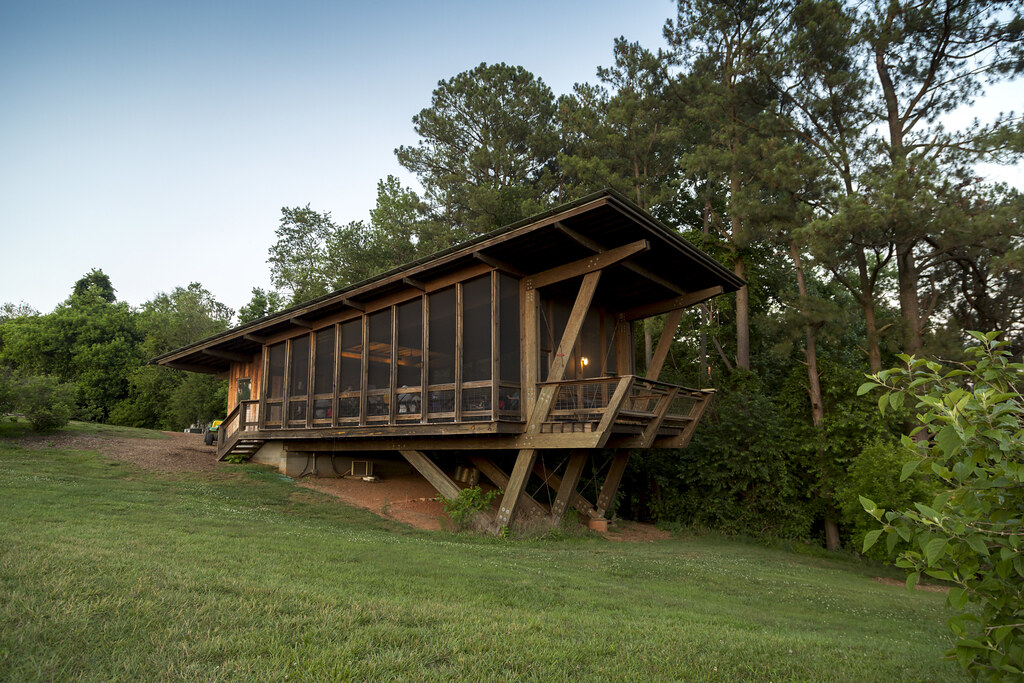
Rustic Tool Display
Have you considered using a rustic tool display to showcase your vintage gardening tools? It’s a wonderful way to add charm and character to your outdoor space while keeping your tools organized and easily accessible. A rustic tool display can transform a simple shed or garden corner into a stunning focal point.
Here are five reasons why a rustic tool display is a fantastic choice for creative tool organization:
Aesthetically pleasing: The weathered wood, metal accents, and vintage vibe of a rustic tool display instantly elevate the visual appeal of your garden area.
Functional: With hooks, racks, and shelves, a rustic tool display provides ample storage space for all your gardening essentials.
Easy to personalize: You can customize your display with unique touches such as hand-painted signs, potted plants, or even fairy lights for a whimsical touch.
Preserves the vintage feel: If you have a collection of vintage gardening tools, a rustic display is the perfect way to showcase their history and charm.

Conversation starter: Your rustic tool display will undoubtedly catch the eye of visitors and spark interesting conversations about your gardening journey and the tools you use.
Farmhouse Garden Ambiance
We can create a charming farmhouse garden ambiance by displaying our vintage gardening tools and incorporating rustic decor.
Imagine stepping into your outdoor oasis, surrounded by the beauty of nature and the nostalgic charm of farmhouse garden decor.
As you walk through your garden, the gentle sound of wind chimes fills the air, while the soft glow of vintage lanterns illuminates your path.
Rustic wooden benches invite you to sit and soak in the tranquility of your surroundings, while antique watering cans and garden baskets add a touch of whimsy.
A vintage wheelbarrow filled with blooming flowers becomes a focal point, adding color and life to your rustic haven.
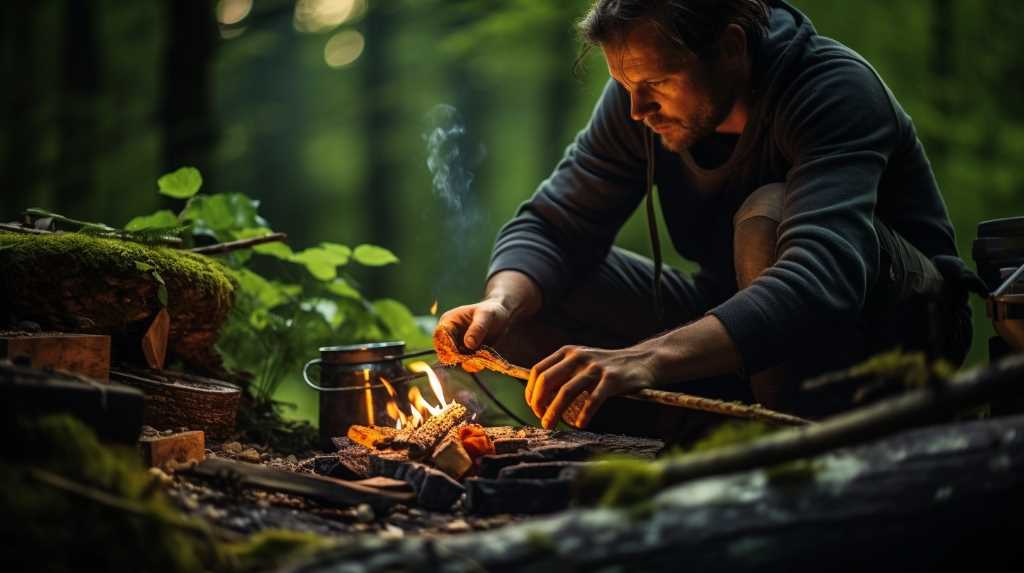
Illuminating With String Lights
We can enhance the ambiance of our outdoor area by stringing up some charming string lights. These twinkling lights not only add a touch of magic to our space but also provide a warm and inviting atmosphere for gatherings and relaxation.
Here are some ideas to make the most of our string lights:
- Create an outdoor chandelier using string lights and mason jars, adding a rustic charm to our space.
- Hang lanterns along the pathway for a cozy and enchanting entrance to our outdoor area.
- Drape the string lights over trees or pergolas to create a captivating canopy of light.
- Arrange the lights in a zigzag pattern to give the illusion of stars scattered across the sky.
- Wrap the lights around a trellis or fence to add a romantic and whimsical touch.
By illuminating our outdoor area with these delightful string lights, we can effortlessly transform it into a magical haven.
Now, let’s move on to designing a cozy seating area where we can relax and unwind under the soft glow of these lights.
Designing a Cozy Seating Area
Let’s skillfully arrange some plush cushions and blankets to create a perfectly cozy seating area for enjoying the serene ambiance of our outdoor space. When designing a cozy seating area, it’s important to consider both comfort and aesthetics.
Start by selecting comfortable seating options, such as oversized armchairs or a plush sectional sofa. Add layers of softness with cushions and throws in warm, earthy tones.
To create a rustic dining area, incorporate a wooden table and chairs with a distressed finish. Enhance the atmosphere by designing outdoor lighting that complements the rustic theme. Hang vintage-inspired lanterns or string lights to create a warm and inviting glow.
As we transition into the next section, let’s explore how to further enhance our outdoor oasis by mounting a porch swing.
Mounting a Porch Swing
First, gather the necessary tools and materials, such as a drill and screws, to securely mount the porch swing.
Installing a porch swing can be a delightful addition to your outdoor space, providing a cozy spot to relax and unwind. To ensure a successful porch swing installation, here are some key steps to follow:
- Measure the available space to determine the ideal location for the swing.
- Choose a sturdy support structure, such as a beam or a strong tree branch.
- Use a stud finder to locate the suitable anchor points for the swing.
- Pre-drill the holes for the screws to prevent wood splitting.
- Make sure to properly tighten all screws for a secure and safe swing.
Proper porch swing maintenance is also crucial for its longevity. Regularly inspect and tighten any loose screws, clean the swing with mild soap and water, and apply a protective sealant if necessary. By taking care of your porch swing, you can enjoy its comfort and charm for years to come.
When it comes to outdoor decor, opting for natural materials can further enhance the rustic appeal of your space.
Opting for Natural Materials
Choosing natural materials can elevate the aesthetic of our outdoor area, giving it a timeless and organic feel. When it comes to outdoor furniture, incorporating natural materials such as wood, rattan, and wicker can add warmth and charm to any space. These materials not only blend seamlessly with the natural surroundings but also provide durability and longevity. To help you visualize the impact of natural materials, take a look at the table below showcasing some popular options for outdoor furniture:
| Material | Description | Advantages |
|---|---|---|
| Wood | Classic and versatile, wood furniture adds warmth and elegance to any outdoor space. | Natural beauty, durability, and low maintenance. |
| Rattan | Known for its lightweight and flexible nature, rattan furniture brings a touch of tropical charm. | Aesthetic appeal, durability, and eco-friendly. |
| Wicker | Woven from natural materials like rattan or bamboo, wicker furniture exudes a rustic and inviting vibe. | Weather-resistant, lightweight, and comfortable. |
Adding Floral Arrangements
Let’s talk about adding floral arrangements to our outdoor space!
Whether you prefer fresh blooms or dried flowers, there are endless options to choose from.
We can discuss the different color schemes that will complement our farmhouse decor and decide if we want to create our own arrangements or purchase them from a store.
Fresh or Dried Flowers
We prefer the vibrant colors and fragrant scents of fresh flowers over dried ones for our outdoor farmhouse decor. Fresh flower arrangements bring life and beauty to our rustic haven, adding a touch of natural elegance. Here are five reasons why we believe fresh flowers are the perfect choice for our outdoor space:
- A burst of color: Fresh flowers provide a kaleidoscope of hues that instantly brighten up any setting.
- Delightful scents: The sweet and invigorating fragrances of fresh flowers create an enchanting atmosphere.
- Ever-changing beauty: With fresh flowers, we can constantly update our arrangements, ensuring a dynamic and visually appealing display.
- Natural authenticity: Fresh flowers bring an authentic and organic charm to our farmhouse decor, reflecting the beauty of nature.
- Versatile creativity: Fresh flowers offer endless possibilities for creative arrangements, allowing us to express our unique style and personality.
Color Scheme Options
To make our outdoor farmhouse decor truly pop, we can experiment with different color scheme options and incorporate floral arrangements that complement our rustic theme.
When it comes to color schemes, we’ve a myriad of options to choose from. We can go for a classic farmhouse look with neutral tones like whites, creams, and grays, accented with pops of color through vibrant flowers. Or, we can opt for a bolder approach by incorporating earthy tones like deep greens and rich browns, evoking a sense of nature and warmth.
Whichever color scheme we choose, it’s important to consider how it will blend with our existing outdoor furniture and the surrounding landscape.
In addition to color schemes, incorporating farmhouse textiles can further enhance the rustic vibe of our outdoor space. We can use cozy wool blankets or checkered tablecloths to create a cozy and inviting atmosphere. Rustic burlap can be used as a table runner or to wrap around potted plants. These farmhouse textiles not only add visual interest but also provide practicality and comfort.
Now that we’ve explored different color scheme options and ideas for incorporating farmhouse textiles, it’s time to consider whether we want to go the DIY route or opt for store-bought decor. Both options have their pros and cons, and it ultimately depends on our personal preferences, time, and budget.
Let’s dive into this next aspect of creating our rustic haven.
DIY or Store-Bought?
There are various options available, but whether we choose to DIY or go for store-bought floral arrangements depends on our personal preferences and budget. DIY projects can be a fun and creative way to add a personal touch to our space. It allows us to showcase our unique style and creativity. On the other hand, store-bought arrangements offer convenience and professional craftsmanship. They’re perfect for those who may not have the time or skills to create their own.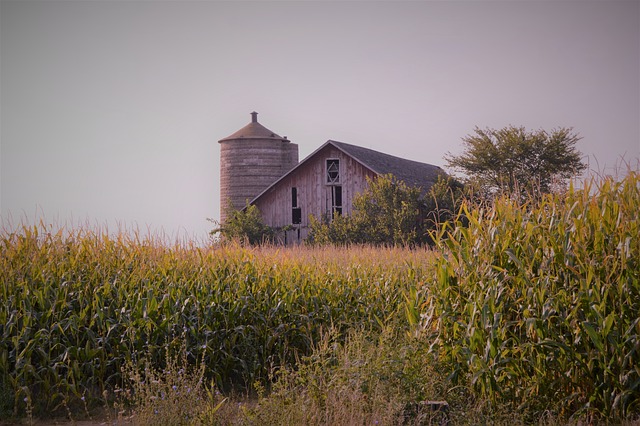
When considering the cost-effective options, here are some factors to consider:
- DIY: We can save money by purchasing flowers in bulk and arranging them ourselves.
- Store-bought: Professional arrangements may have higher upfront costs, but they require less maintenance and last longer.
- Skill level: DIY projects require some level of skill and time commitment.
- Time: DIY projects can take longer to complete compared to purchasing store-bought arrangements.
- Personal preference: Some individuals enjoy the process of creating their own arrangements, while others prefer the convenience of store-bought options.
In the end, the choice between DIY and store-bought floral arrangements depends on our personal preferences, budget, and the level of time and skill we’re willing to invest.
Integrating Indoor and Outdoor Elements
Let’s find creative ways to blend indoor and outdoor elements for a seamless and inviting space. Integrating indoor and outdoor elements is all about creating a seamless transition, blurring the boundaries between the inside and outside. By combining nature-inspired elements with indoor comforts, we can design a space that feels both cozy and connected to the outdoors.
One way to achieve this is by incorporating natural materials into our indoor decor, like wood, stone, or rattan. These materials not only add a rustic touch but also create a visual link to the outdoors. Additionally, we can bring outdoor elements inside, such as potted plants or hanging gardens, to infuse the space with a fresh and lively atmosphere.
To further enhance the seamless transition, consider incorporating large windows or glass doors, which allow natural light to flood in and provide uninterrupted views of the surrounding landscape. By blurring the lines between our indoor and outdoor spaces, we can create a harmonious and inviting environment that brings us closer to nature.
Now, let’s explore another aspect of enhancing our outdoor area: choosing unique planters.
Choosing Unique Planters
We often search for eye-catching and unconventional planters, so we can add a touch of personality to our outdoor space. Unique planter ideas and DIY planter projects are a great way to showcase our creativity and make our gardens truly one-of-a-kind. Here are five ideas to inspire your next planter project:
- Repurpose an old bicycle basket as a hanging planter for a whimsical touch.
- Use vintage teacups or mugs as small planters for a charming and eclectic look.
- Turn an old ladder into a vertical planter, perfect for displaying a variety of plants.
- Create a planter out of an old wheelbarrow for a rustic and functional addition to your garden.
- Repurpose an old wine barrel into a large planter, adding a touch of elegance to your outdoor space.
By incorporating these unique planter ideas, we can enhance our outdoor area.
Seamlessly transition into the subsequent section about enhancing with farmhouse accents.
Enhancing With Farmhouse Accents
Our outdoor space is transformed into a cozy haven with the addition of a few farmhouse accents. Rustic kitchen decor and farmhouse lighting ideas can elevate the charm and warmth of any outdoor area.
Picture a picturesque patio adorned with vintage lanterns hanging from a pergola, casting a soft, inviting glow as the sun sets. The rustic kitchen decor adds a touch of nostalgia and rustic elegance, creating a delightful ambiance for outdoor dining and entertaining.
Weathered wooden furniture, wrought iron accessories, and burlap textiles further enhance the farmhouse aesthetic. Imagine sitting on a cozy porch swing, sipping a refreshing drink and basking in the tranquility of your rustic oasis.

With the right farmhouse accents, your outdoor space can become a haven for relaxation and rejuvenation.
Frequently Asked Questions
How Do I Choose the Right Size and Style of Rustic Furniture for My Outdoor Space?
When choosing the right size and style of rustic furniture for our outdoor space, we consider several factors.
First, we assess the available area and determine the appropriate dimensions for the furniture pieces.
Next, we think about the overall style we want to achieve, whether it’s a more traditional farmhouse look or a modern space with rustic elements.
Additionally, we might consider incorporating outdoor rugs to add warmth and texture to the space.
What Safety Precautions Should I Take When Installing a Fire Pit in My Backyard?
When it comes to fire pit safety, we take backyard fire pit precautions seriously. Installing a fire pit in our outdoor area requires careful consideration of safety measures.

From choosing a suitable location, ensuring proper ventilation, and using fire-resistant materials, we prioritize the well-being of everyone enjoying our rustic haven.
How Can I Properly Clean and Maintain Vintage Gardening Tools for Display?
When it comes to vintage gardening tools, proper cleaning and maintenance are essential for their preservation and display.
To clean them, we recommend using a gentle scrub brush or cloth to remove dirt and rust. For stubborn stains, a mixture of vinegar and baking soda can be effective.
Afterward, it’s important to dry the tools thoroughly and apply a protective coating, such as linseed oil, to prevent further corrosion.
These cleaning techniques and preservation methods will help your vintage gardening tools shine in your outdoor area.
What Are Some Creative Ways to Hang String Lights in My Outdoor Area?
When it comes to hanging string lights in our outdoor area, we’ve discovered some creative techniques that add a touch of charm. From draping them along tree branches to suspending them from a pergola, the possibilities are endless.

And if you’re looking for alternative lighting options, consider lanterns or mason jar lights. These rustic accents will create a cozy and inviting atmosphere, perfect for enjoying those warm summer nights.
Are There Any Special Considerations I Should Keep in Mind When Mounting a Porch Swing?
When mounting a porch swing, there are a few special considerations to keep in mind.
First, ensure that the structure you’re attaching the swing to is sturdy and can support the weight. Use the proper hardware and follow the manufacturer’s instructions for installation.
Regular maintenance is important to keep your porch swing in good condition. Check for any signs of wear or damage, and clean it regularly to prolong its lifespan.
How Can Farmhouse Decor Enhance the Rustic Charm of Farmhouse Living?
Farmhouse decor effortlessly enhances the rustic charm of farmhouse living. Incorporating nostalgic elements like antiques, distressed furniture, and natural materials allows for an authentic rustic farmhouse living experience. With its warm hues, vintage accents, and cozy atmosphere, rustic farmhouse living abc creates a welcoming and idyllic ambiance that celebrates timeless traditions and rustic beauty.
How Can Tole Painting Add a Rustic Touch to My Farmhouse Decor?
Tole painting for farmhouse decor is a perfect way to infuse a rustic touch into your home. The intricate strokes and folk art motifs of tole painting effortlessly complement the cozy and charming atmosphere of a farmhouse. Incorporating hand-painted trays, signs, or decorative objects can help create a nostalgic and vintage feel, enhancing the overall appeal of your farmhouse décor.
Conclusion
As we bring our outdoor space to life with farmhouse decor, we can’t help but be captivated by the rustic charm and cozy atmosphere it creates.
From the warmth of a crackling fire pit to the twinkle of string lights illuminating our evenings, every element adds to the allure of our rustic haven.
So, gather your vintage gardening tools, find the perfect planters, and let the farmhouse accents transport you to a world of tranquility and beauty in your own backyard.
-

 Bathroom3 months ago
Bathroom3 months ago10 Fascinating Facts About Laurel Foundry Modern Farmhouse Furniture Made
-

 Midwest Marvels3 months ago
Midwest Marvels3 months agoTop 10 Time-Trips: Experience the Midwest’s Historical Farmhouses
-

 Farmhouse Decor Inspirations3 months ago
Farmhouse Decor Inspirations3 months agoDesign Your Dream Rural Space: A Complete Guide to Crafting a Farmhouse Decor Scheme
-

 Historical Farmhouse Explorations by Region3 months ago
Historical Farmhouse Explorations by Region3 months agoCivil War Era: Top 10 Civil War Era Historic Farmhouses
-

 New England Nostalgia1 week ago
New England Nostalgia1 week agoUnearthing the Past: Top 10 New England Farmhouses Every History Buff Must Visit
-

 Farmhouse Decor Inspirations3 months ago
Farmhouse Decor Inspirations3 months ago10 Easy DIY Projects for a Rustic Farmhouse Decor
-

 Bedroom3 months ago
Bedroom3 months agoHow Can You Blend Wrought Iron Bed, Ruffled Bedding, and Other Elements for a Perfect Farmhouse Bedroom Design?
-

 Midwest Marvels1 week ago
Midwest Marvels1 week agoUnearth the Past: Midwest’s Top 10 Historical Farmhouse Tours















